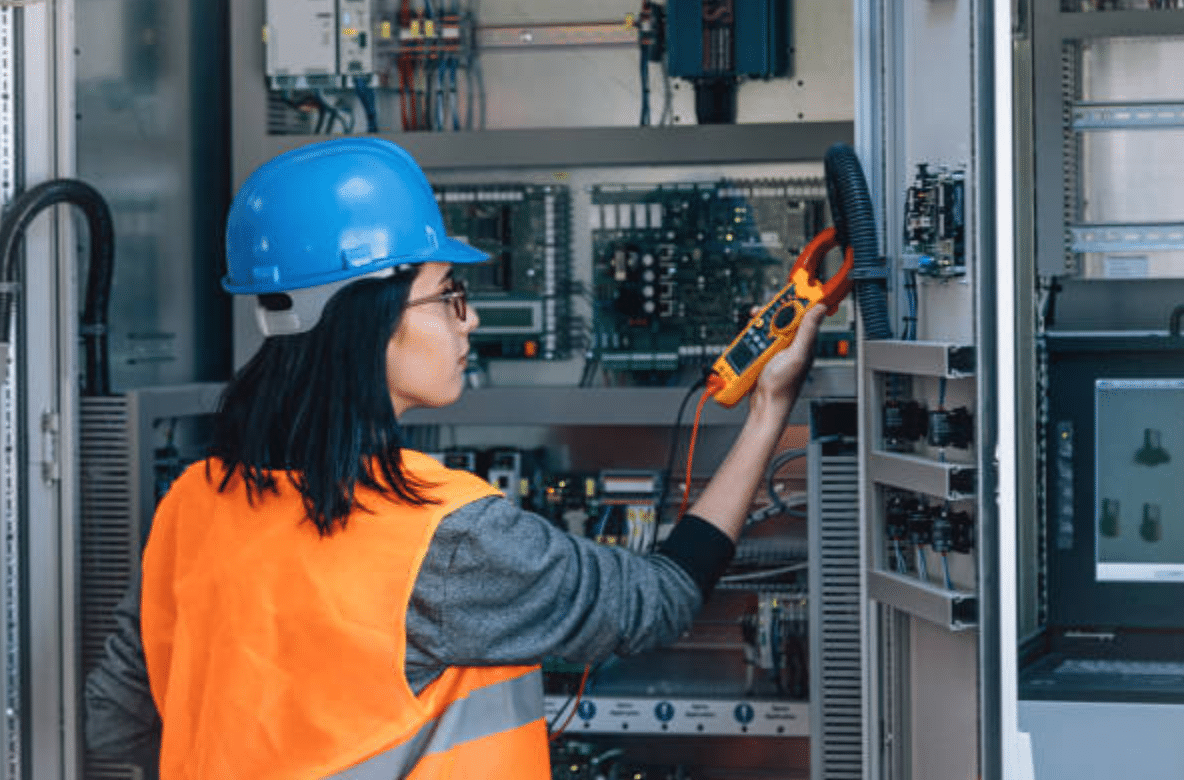The world is becoming more electrified; protection of sensitive electrical systems is important to ensure there is continuous operation in residential, commercial and industrial areas. The surge protection device (SPD) is one of the most fundamental devices towards realizing this protection. SPDs effectively provide protection to transient overvoltages (a sudden spike in voltage) that may occur due to lightning strikes, changes in the power grid or due to a shift in internal loads. As power systems are becoming increasingly complex, learning the types of devices that exist to protect the surge, becomes a necessity and not an option any longer. The equipment provided by these devices is reliable and long-lasting, as well as allows businesses to prevent a potentially expensive downtime. The process of selecting the proper SPDs begins with collaborating with an efficient SPDs manufacturer who provides compliance-based SPDs solutions to certain voltage conditions as well as system architecture.
Knowledge of the Role and Types of Surge Protection Device
Surge Protection Devices, better known as SPDs, are designed in a way that they restrict transient voltages by conducting excessive surge currents down to the ground. The contribution of SPDs is central in maintaining the integrity of the electrical infrastructure, particularly the extent to which more smart technologies, automation systems, and data-sensitive devices are becoming part of the current operations. There are three major categories of SPDs, namely, Type 1, Type 2, and Type 3, which are meant to cover a different layer of protection.
Type 1 SPDs are fitted at the main service entrance and are designed in particular to accept high-energy surges of external origin, i.e. direct lightning strikes. These protective devices stop surge energy getting into the internal wiring of the building and therefore provide primary protection of downstream equipment. Type 1 SPDs are not only a good idea, they are also necessary in regions where electrical storms are common or where connecting buildings are to overhead power lines.
Type 2 SPDs are, however, mounted at distribution boards or subpanels. They handle residual surges that occur through Type 1 SPDs or internal origins such as switching, HVACs or motor starts. The given SPDs are very versatile and are the most popular use of protection devices both in the commercial and industrial settings. The perfect SPDs manufacturer will ensure they produce different voltage devices and discharge capacities that meet various applications of the Type 2 devices.
Type 3 SPDs come last in this chain of defence, and are installed at point of use-immediately adjacent to sensitive electronics. These are surge-protected power strips/plug-in modules capable of dealing with low-level surge and dealing with noise filtering. They work poorly alone, but are essential when paired with upstream Type 1 and Type 2 devices because they can help guard against large voltage surges.
Cohort Protection Planning and Integration of the System
The potential to combine all the above three variants of SPD deployment to create a high-level defensive system is the real power of the SPD deployment. Referring to one type of SPD may leave loopholes in terms of protection, more particularly in those electrical network systems that are larger or more complex. An integrated surge protection plan assures that high surges are swept out at the ingress point, intermediate level disturbances are dealt with at distribution panels and residual voltages are engaged at the point of application. This type of a design reduces the probability of equipment breakdown and improves system reliability.
Integration is particularly needed in facilities that have operations involving mission-critical machines–data centers, hospitals, telecom centers, and production lines. A multi-layered design is also suitable to meet the current regulations and protection commitments of building such as the current electrical protection, such as IEC 61643 or UL 1449. The finest SPDs can hardly be referred to as hardware but as system elements that have been chosen and put in as a result of careful deliberation. That is why it is important to collaborate with a qualified and educated SPDs manufacturer. They not only sell products, but also provide the knowledge of the loads that must be met, the conditions that environment causes, the methods of integration, so that each layer of protection augments the next.
The Significance of Quality as a Dealer of Surge Protectors
As far as the aspects of surge protection are concerned, the quality of devices used is immensely critical. Spd are not all created equal. Low quality products might not be rated appropriately and reliable enough to guard your equipment in high quantum surges. Properly sized and well-made surge protectors are life-saving devices because properly installed protectors are likely to serve the purpose even in critical situations, unlike low-quality protectors that will take a toll on your infrastructure and leave them without a chance to recover. That is why it is imperative that we obtain SPDs at a good SPDs manufacturer that provides high quality parts i.e Metal Oxide Varistors (MOVs) and Gas Discharge Tubes (GDTs) which are made to survive in extreme conditions.
A dependable manufacturer guarantees that we test out all SPDs or better than the industry standards. These cover surge current handling tests, temperature stability tests, response time tests and long-term reliability tests. Risk reduction and improving the dependability of your electrical system depends on quality assurance. Be it mission critical data centers, complex industrial machinery or even household appliances; investing in high quality surge protective devices will relieve the sadness of thinking about loss of your asset.
Why It Is so Important to Select a Dependable SPDs Manufacturer
Surge protective devices have to achieve high standards of safety, durability, and performance. Quality SPDs are constructed of such elements as metal oxide varistors (MOVs) or gas discharge tubes (GDTs) which must be engineered to a high standard with the best materials and can work under pressure. Poor quality SPDs can give temporary relief and would usually fail during power transient or repetitive surges. This is why the decision to select a manufacturer of SPDs may either kill (or make) your protection strategy.
A well-known brand does not only make SPDs, they develop based on SPDs. They spend on R&D on enhancing thermal stability, contact resistance and remote signaling capabilities. They take their equipment through lab conditions to give it real life-like situations such as lightning impulse tests, salt sprays, heating up and cooling down, and current impulse simulations. Furthermore, certified manufacturers guarantee the meeting of international standards e.g. IEC/EN 61643-11 and even support customers by advising them with getting the appropriate level of protection of their installations, whether in the residential grids, in the sunpower parks, or in the industrial automation works.
Another important element is customer support. Superior SPDs suppliers do not just sell the products and that is all but they also offer technical documentation, schematics and diagrams, support and customization of branded solutions to OEMs/ODMs as well. Others go an extra mile and provide high level logistic and packaging services, which support installers and distributors.
Finally, surge protection is not a matter of only selecting devices but a complete system decision. A good example of such a sentence is: The effectiveness of the surge-resistant network implies the necessity of a good comprehension of the types of surge protection devices and the selection of the suitable manufacturer of SPDs.
Conclusion
Electrical surges can happen at any time, however, damage can be avoided. By understanding how the different surge protection device types function and how they work together, you can design a protection system that’s robust, scalable, and code-compliant. Type 1 catches huge external overloads. The neutralization of internal and residual transients is type 2. Type 3 protects the least secure ones. When properly done, this tiering strategy is the invisible wall that guarantees up time as well as minimizing failures of equipment, thus saving in terms of maintenance costs.
The secret to the successful application of this system is in the choice of a reliable manufacturer of SPDs which knows your application and its peculiarities and offers the products tested and certified and also the products that can last a long time. Whether it is off-the-shelf model-based or complete custom built SPD systems, the right vendor will assist you in future-proofing your electrical system to meet the challenges of the unreliable power environment.





